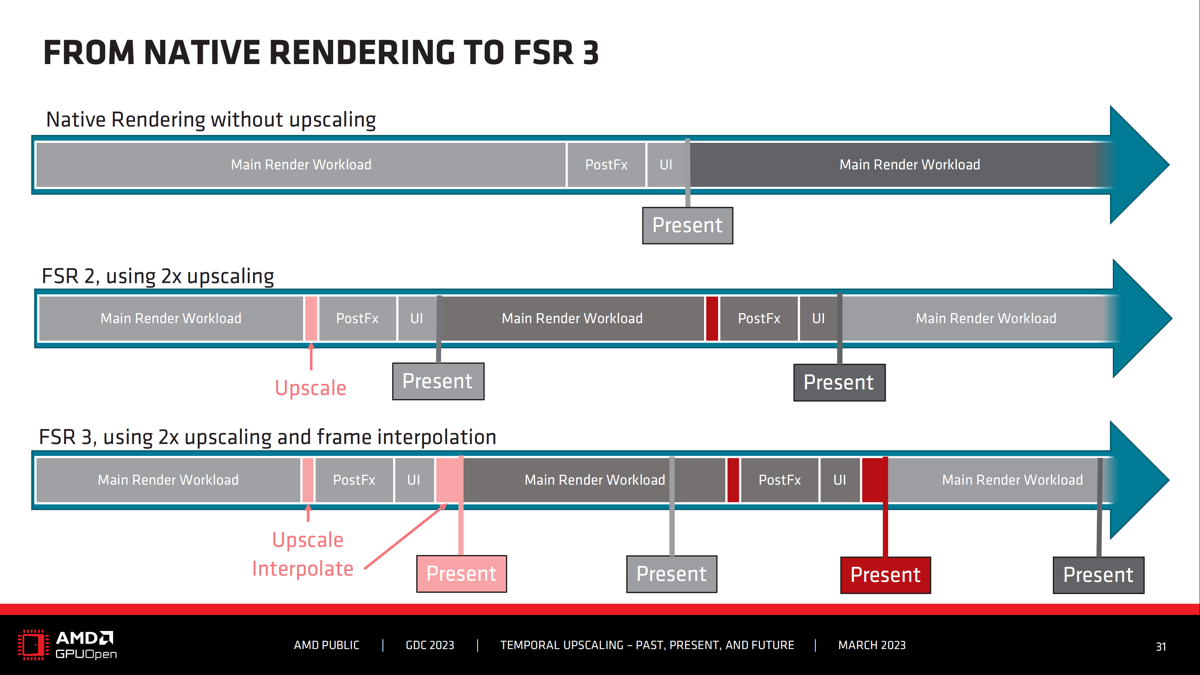
FidelityFX Super Resolution 3, better known as FSR 3, is the newest version of AMD’s upscaling technology, which promises to be a breakthrough by introducing frame interpolation and reducing latencies. The first feature should make FSR a closer competitor to a DLSS that clearly dominates the market right now, but at the cost of only running on NVIDIA graphics.
The last novelty that we have known about the frame interpolation in FSR 3 is that, according to a line of code that has been seen by the Twitter user @Kepler_L2 in one of the GPUOpen repositories on GitHub, the feature points to being would enable from the driver side and that will generate more than one interpolated frame.
In the source code of the Platform Abstraction Library (PAL/Platform Abstraction Library) posted on GitHub you can see two lines of code that apparently refer to how the frame generation technology would be implemented in FSR 3.
In the code you see that FSR 3 will have a frame rate of up to four interpolated frames. This means that, for each real frame, the rescaling technology would be capable of generating up to four interpolated frames. This may not come as a complete surprise to NVIDIA users, as DLSS 3 is capable of generating one interpolated frame per actual frame when enabled.
However, we just mentioned one important difference between FSR 3 and DLSS 3, which is that the latter does not allow users to change the frame rate value, so it stays fixed at 1 unless NVIDIA changes it ( and that if you can bear them). DLSS relies on Tensor cores and model learning to generate interpolated frames, but even with the help of artificial intelligence, the green giant’s upscaling technology initially ran into performance issues. tearing and ghosting that to this day he is still trying to solve definitively.
Since part of the strength of DLSS is based on the use of artificial intelligence, AMD is expected to move in that direction, but the head of Radeon has already said that, at least for now, will not make FSR fully lean on artificial intelligence. On the other hand, because the characteristic of frame interpolation would be integrated into the driver, it opens the door for this feature of FSR 3 not to work on NVIDIA and Intel graphics What’s more, some are already speculating that the new version of AMD’s upscaling technology, in any of its forms and implementations, will only work with Radeon graphics.
We will see what happens in the end with an FSR 3 that is not yet available, not even in its initial phase for commercial video games. The lines of code that have appeared in PAL suggest that features such as frame interpolation will only work on Radeon graphics, and we’ll see with which drivers seeing the mess that AMD has mounting around its support for Linux (and yes, this affects the Steam Deck).
If this possibility is confirmed that FSR 3 will only work on Radeon graphics, without it doing so even if it is castrated by NVIDIA and Intel, it would be a betrayal by AMD towards those developers who bet on their technology because it was promoted in its moment as a multiplatform.
Another aspect that remains in the air is the image quality resulting from the interpolation of a greater number of frames, but here it is important to remain cautious because it would not be the first time that a very promising technology ends up giving very disappointing results.



